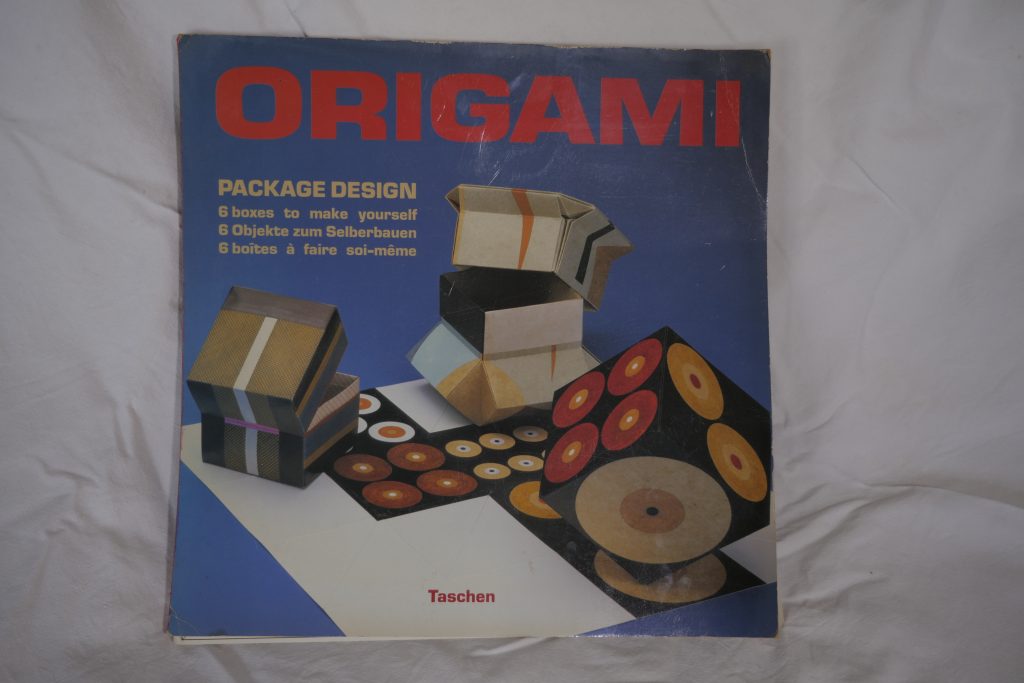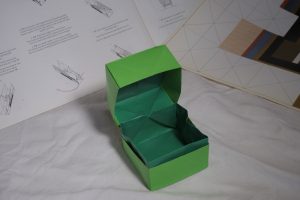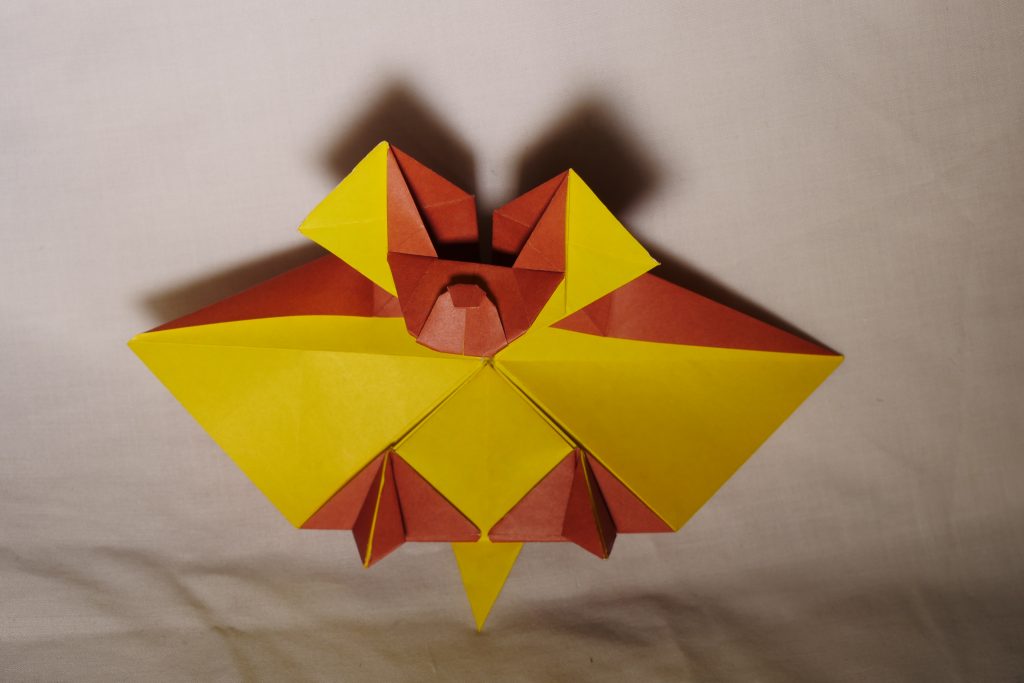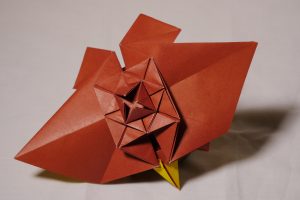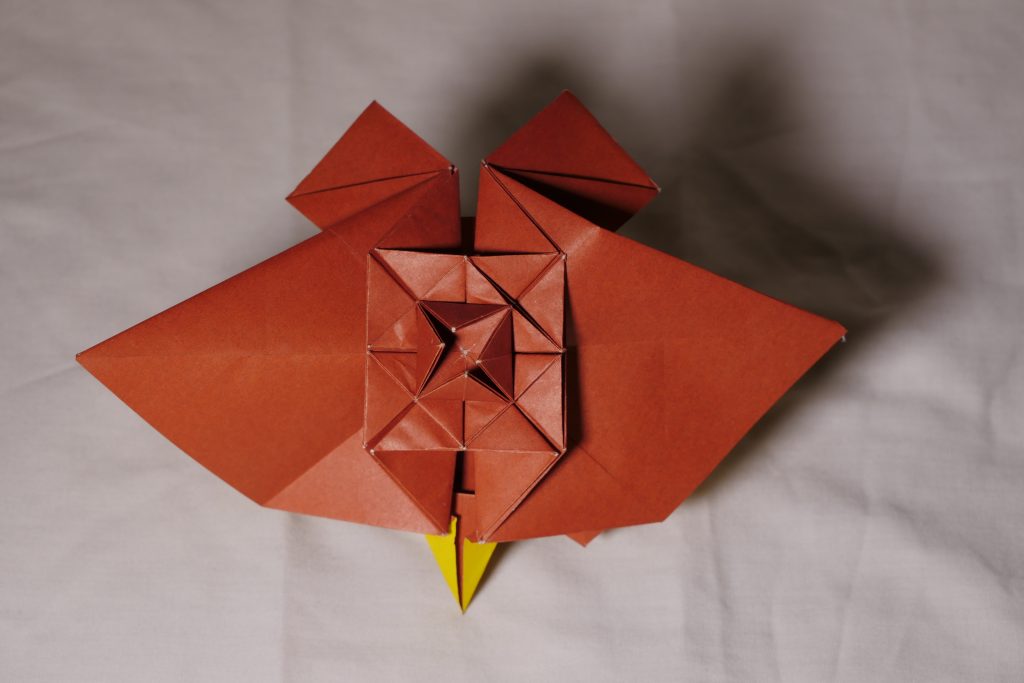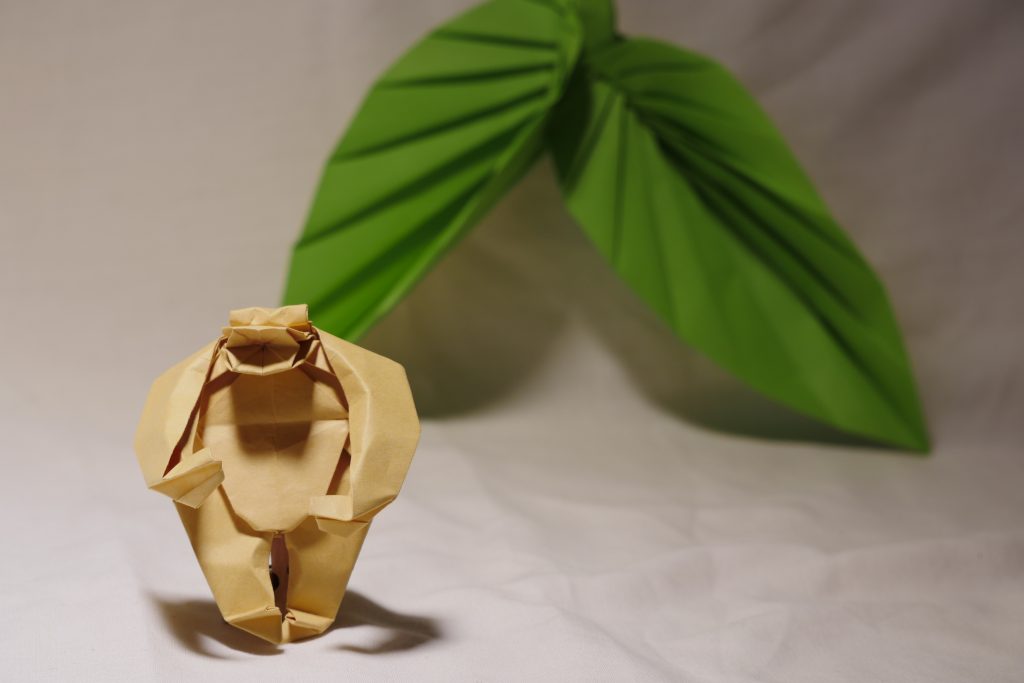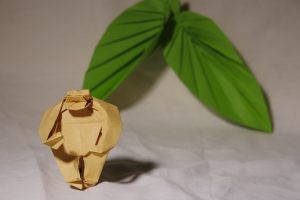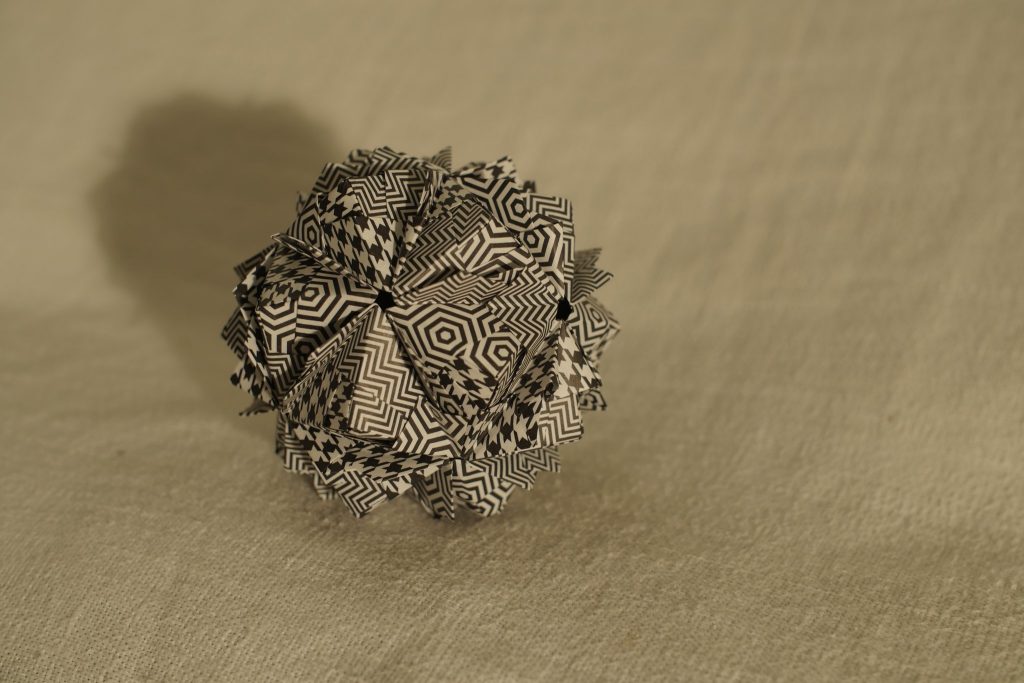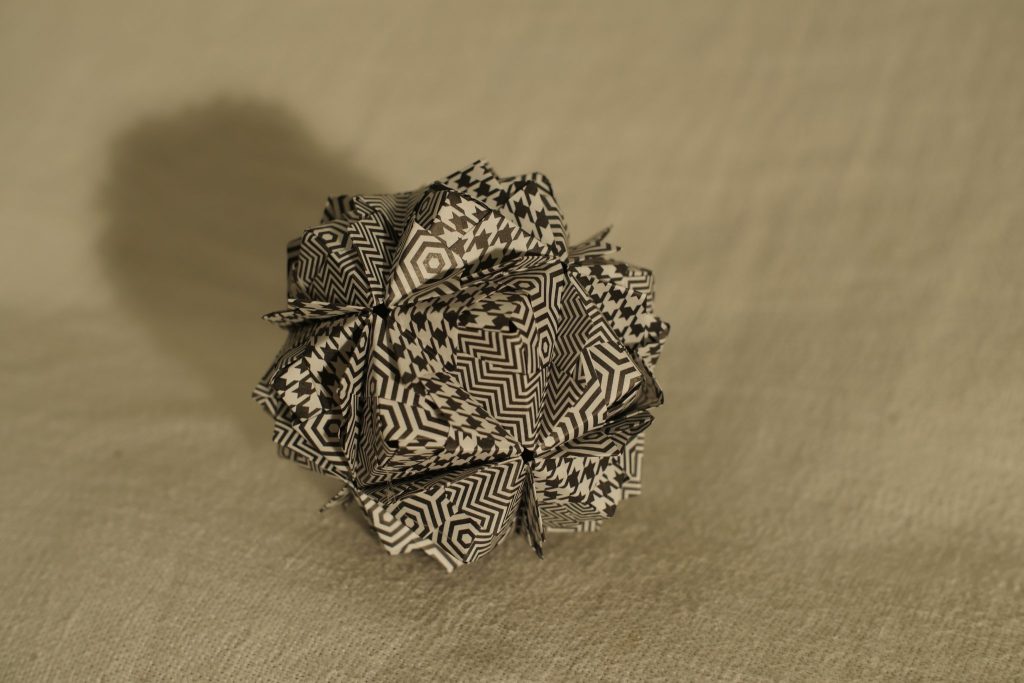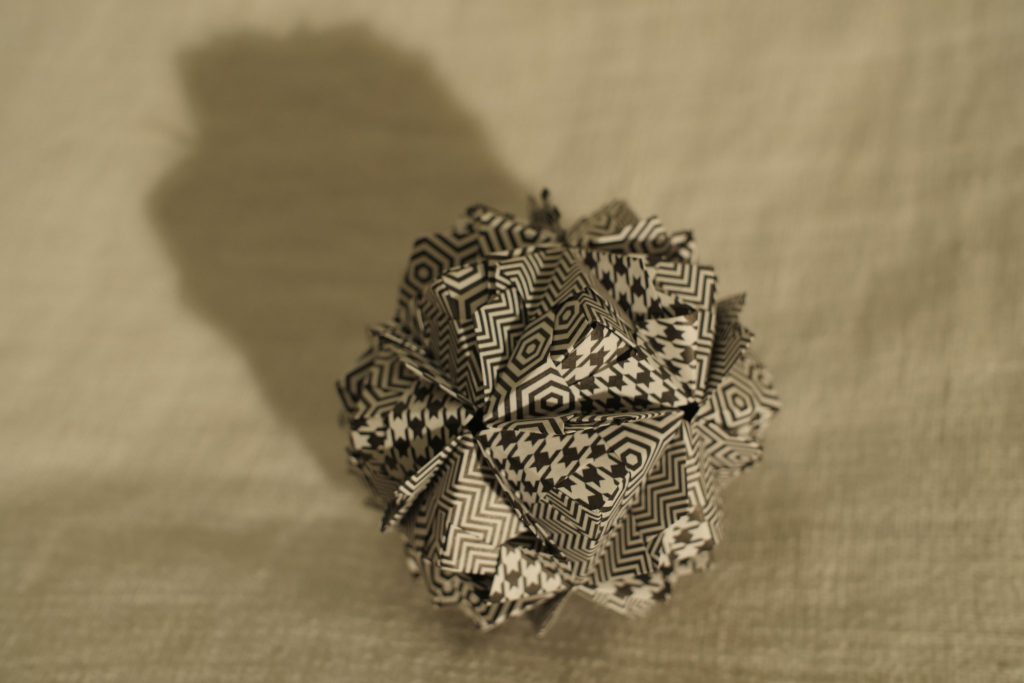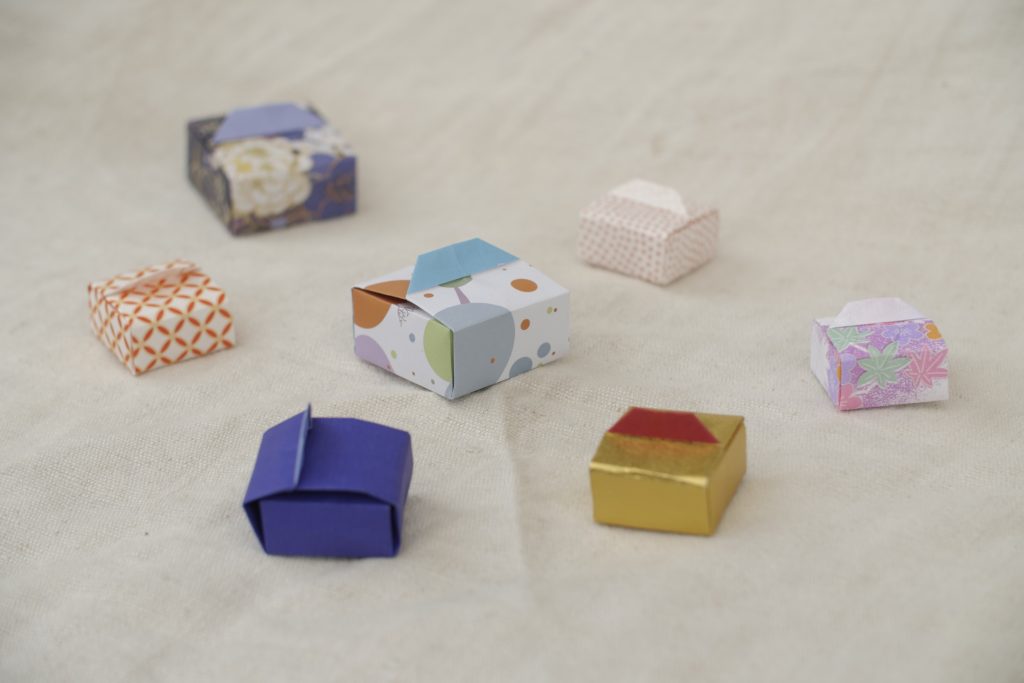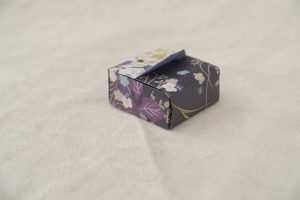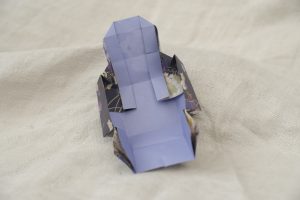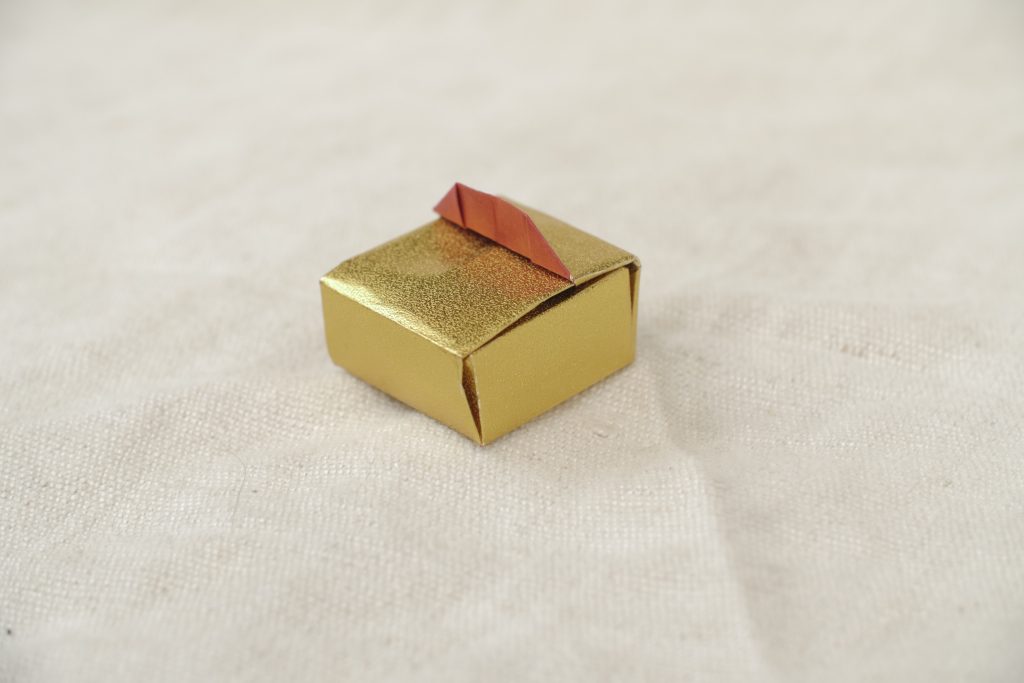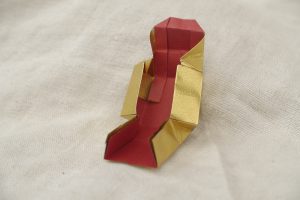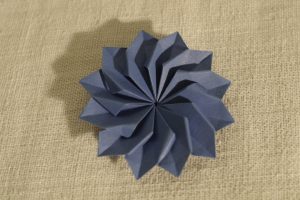My mother recently found this in her basement, and of course she gave it to me. It’s a huge book (36cm each side) with 8 sheets of printed paper to fold 5 models (one coaster, the others are boxes, with or without lids) and a few pages of explanation on how to fold the pre-marked pages. The models are mostly not traditionnal, but no author is mentionned – if anyone knows them, please let me know :)
I wanted to keep the deliciously vintage papers, so I tried to retro-ingeneer the models on other papers. Below is my most convincing attempt. It took me hours, because you’re supposed to fold following the lines on the pre-printed papers, so the references had to be found out by trial and error.
This box is folded from one sheet of double-sided kami, 35cm.
The dolphin is from David Brill, with diagrams on his website (this model is not in his book, which you should have nonetheless for all the other amazing models!).

